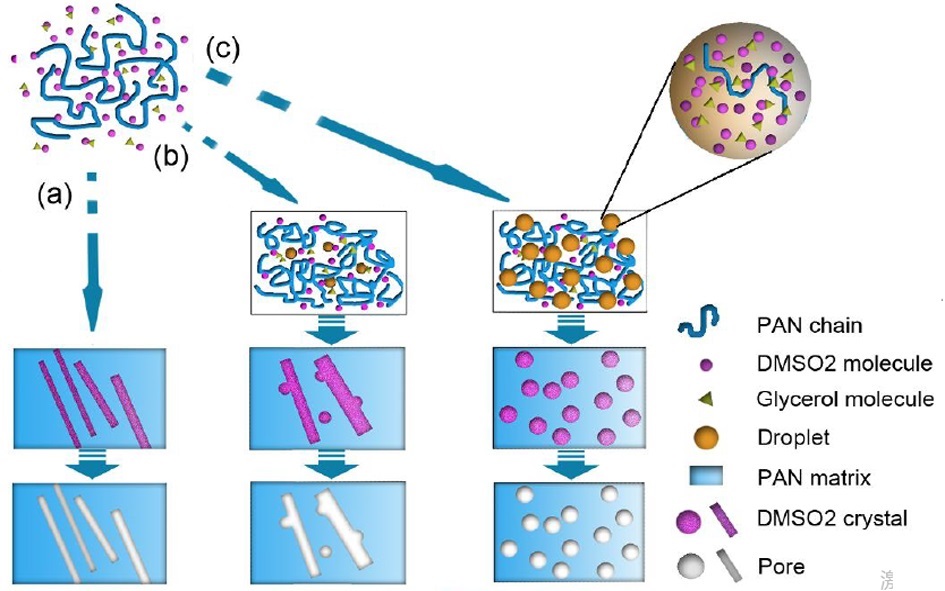Phase separation and preparation of polymer porous membrane
Membrane separation technology has many advantages, such as high efficiency and low energy consumption. Therefore, membrane separation technology is widely used in various fields such as water treatment, petrochemical industry, food and medical treatment. How to prepare highly controllable separation membranes has always been a great challenge. In this paper, the thermal phase separation process of polymer solution is studied in detail by combining theoretical calculation with experiment, which is used to guide the regulation of membrane structure and the preparation of high performance polymer separation membrane. On the basis of a deep understanding of the preparation of the polymer separation membrane by thermally induced phase separation, we have successfully prepared the polymer separation membrane with ideal vertical through hole structure by using the crystalline small molecules as the solvent and the crystal orientation growth through the temperature gradient, and systematically studied the film forming process. The vertical through-hole membrane can be used as the basement membrane and lithium ion battery separator of high-performance permselective membrane, or directly used for the precise separation of different kinds of fungi.Related literature are as follows:
1. H.-Q. Liang, K.-J. Ji, Z.-K. Xu, et al., Polymer Membranes with Vertically Oriented Pores Constructed by 2D Freezing at Ambient Temperature. ACS. Appl. Mater. Interfaces, 2016, 8, 14174-14181;
2. H.-Q. Liang, K.-R. Lee, Z.-K. Xu, et al., Forward Osmosis Membranes with Unprecedented Water Flux. J. Membr. Sci., 2017, 529, 47-54;
3. H.-Q. Liang, Q.-Y. Wu, Z.-K. Xu, et al., Thermally Induced Phase Separation Followed by in situ Sol–Gel Process: A Novel Method for PVDF/SiO2 Hybrid Membranes. J. Membr. Sci., 2014, 465, 56-67;
4. Q.-Y. Wu, B.-T. Liu, Z.-K. Xu, Polyacrylonitrile Membranes via Thermally Induced Phase Separation: Effects of Polyethylene Glycol with Different Molecular Weights. J. Membr. Sci., 2013, 437, 227-236.

.png)